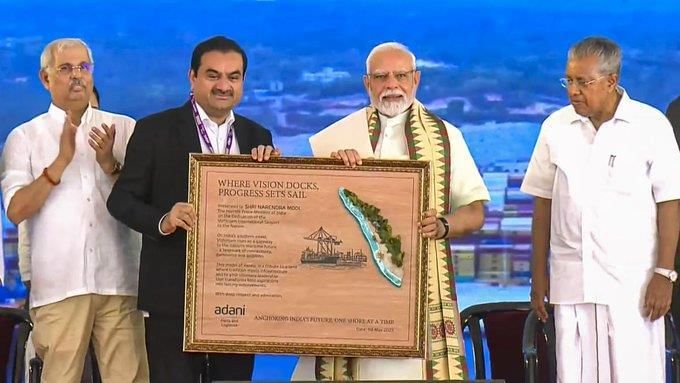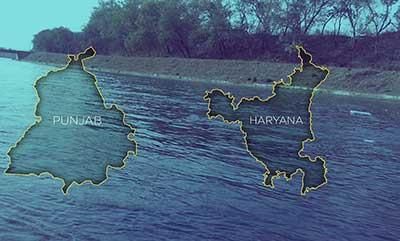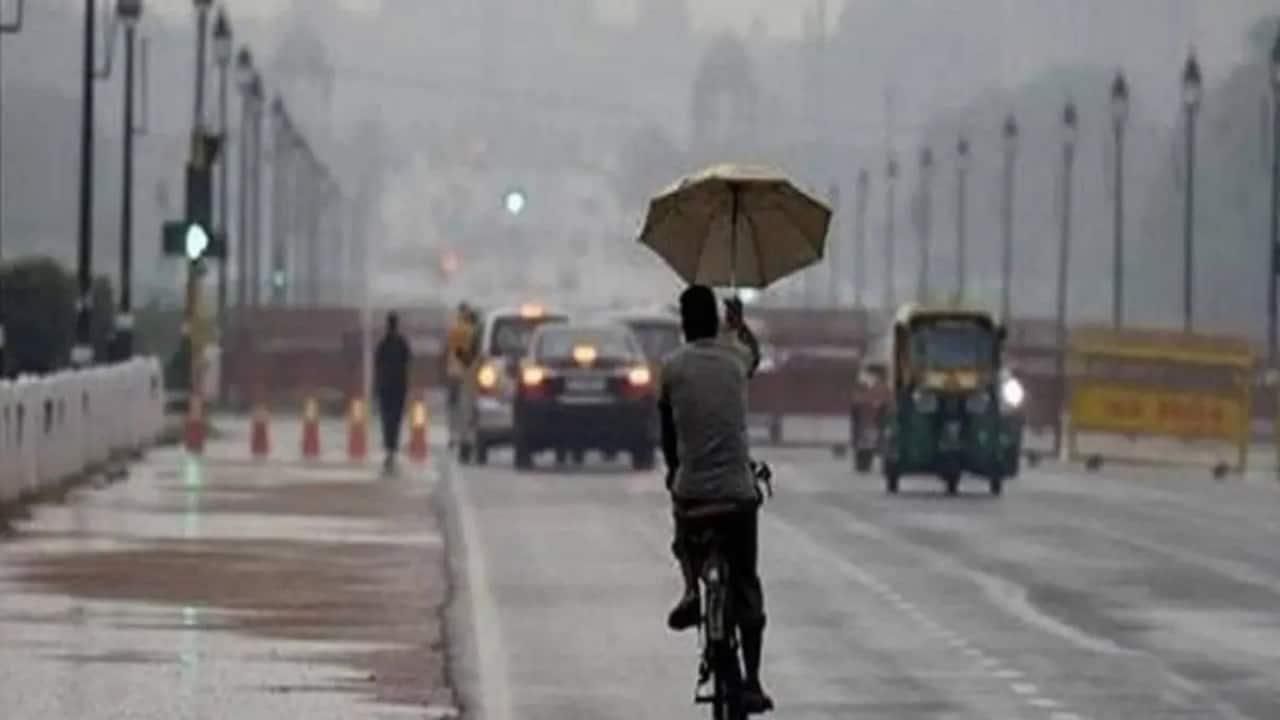UPSC Daily Current Affairs: 3rd May 2025 | Current Affairs & Hindu Analysis: Daily, Weekly & Monthly PDF Download
GS2/International Relations
A Profound Shift in the Global Order
Why in News?
The global landscape is undergoing significant changes, with India positioned at a crucial historical juncture. This moment parallels Vasco Da Gama's arrival in Kozhikode in 1498, marking a new era in global trade. Today's shift is driven not by maritime routes but by transformations in global value chains amid geopolitical and economic pressures. As India aims to become the world's third-largest economy, it must navigate a complex environment where strategic foresight will be essential for future growth.
Key Takeaways
- Globalization is declining, with the traditional post-colonial order losing relevance.
- New global institutions like BRICS are emerging to fill the vacuum left by declining powers.
- India has a unique opportunity to establish itself as a leader in the reshaped global order.
- Technological advancement and innovation are critical for India's future economic positioning.
Additional Details
- Decline in Globalization: The multilateralism that characterized the post-colonial order is eroding, as evidenced by the waning influence of institutions like the WTO and the UN. The COVID-19 pandemic has further exposed these fractures, highlighting nationalistic tendencies among major economies.
- Emergence of New Institutions: The weakening of the G-7 and G-20 indicates a diffusion of power, with emerging economies like those in BRICS aiming to redefine the global agenda.
- Asia's Resurgence: The economic center of gravity is shifting back to Asia, with countries like China and Russia asserting their influence. India must leverage this trend to secure its place in the global hierarchy.
- Technological Imperatives: India needs to enhance its capabilities in software and digital technologies. The focus should be on fostering innovation and creating a robust digital infrastructure to maintain competitive advantages.
In conclusion, India stands at a pivotal moment that requires a decisive shift from historical diplomatic balancing to a bold strategic vision. By rethinking trade and diplomatic engagements, investing in technology, and establishing a new framework for global governance, India can shape the future of the 21st century and secure its rightful position in the evolving global order.
GS1/Geography
Changing Patterns of Western Disturbances
Why in News?
Recently, heavy rainfall and strong winds have caused significant disruptions in Delhi due to a fresh influx of Western Disturbances affecting North India.
Key Takeaways
- Western Disturbances are extra-tropical weather systems originating from the Mediterranean region.
- They transport moisture from various seas including the Mediterranean, Black, Caspian, and Arabian Seas.
- These disturbances are associated with the subtropical westerly jet stream, bringing rain, snow, and fog predominantly from December to March.
- They play a crucial role in winter and pre-monsoon rainfall in Northwest India and are vital for rabi crops like wheat.
Additional Details
- Recent Changes: Observations indicate an increase in the frequency of Western Disturbances, particularly from late January onwards, now occurring outside the traditional winter months.
- These disturbances have even been noted in May, June, and July, previously uncommon months for such weather patterns.
- The geographic impact of these disturbances is also expanding, now affecting larger areas of North and Northwest India.
- Reasons for Changes: Factors such as the strengthening of the subtropical westerly jet stream, likely due to rising global temperatures, and the delayed retreat of the jet stream are influencing these patterns.
- Additionally, the warming of the Arabian Sea (by 1.2°C to 1.4°C over recent decades) is leading to increased moisture and intensified rainfall.
In summary, the changing patterns of Western Disturbances are significant for understanding current weather phenomena in India and their implications for agriculture and regional climates.
UPSC 2015 Question:
Consider the following statements:
- 1. The winds which blow between 30° N and 60° S latitudes throughout the year are known as westerlies.
- 2. The moist air masses that cause winter rains in the North-Western region of India are part of westerlies.
Which of the statements given above is/are correct?
- Options: (a) 1 only (b) 2 only (c) Both 1 and 2 (d) Neither 1 nor 2
GS3/Economy
Vizhinjam Port Inauguration: Boosting India’s Maritime Economy and Global Trade Presence
 Why in News?
Why in News?
Prime Minister Narendra Modi has inaugurated the ₹8,800 crore Vizhinjam International Deepwater Multipurpose Seaport located in Kerala's capital. This significant project marks India's entry into the global container transhipment arena and is a culmination of long-term efforts to establish the country's first deepwater transhipment port.
Key Takeaways
- The Vizhinjam Port is strategically positioned to enhance India’s logistics capabilities in the Indian Ocean region.
- This project is developed under a Public-Private Partnership (PPP) model between the Adani Group and the Kerala government.
- It is expected to save India approximately $220 million annually by managing its own transhipment cargo.
- The port aims to reduce India's dependency on foreign ports for transhipment.
Additional Details
- Natural Depth: The Vizhinjam Port features a natural draft of nearly 20 meters, enabling it to accommodate ultra-large container vessels, which are crucial for global cargo movement.
- Strategic Location: Its location near international shipping lanes makes it ideal for large cargo vessels, enhancing India's maritime capabilities.
- Since its conceptualization in 1991, the port faced several delays due to environmental and logistical challenges, but its operationalization in 2025 marks a pivotal achievement in India's maritime infrastructure.
- Economic Impact: By shifting transhipment operations in-house, India is set to improve logistics efficiency, reduce delivery delays, and strengthen economic resilience during geopolitical disruptions.
- The port is seen as a model of cooperative federalism, showcasing a partnership between a major private enterprise and a state government.
The inauguration of the Vizhinjam International Deepwater Port is more than just a logistical upgrade; it represents a strategic pivot for India's economy. This port is expected to play a crucial role in reducing external dependencies, optimizing maritime routes, and creating local job opportunities, thereby positioning India as a significant player in global trade. As its capacity expands over the coming years, it is anticipated to be a cornerstone of India's maritime policy and a major economic driver in the Indo-Pacific region.
GS3/Environment
Red-Crowned Roofed Turtle Returns to Ganga After 3 Decades
 Why in News?
Why in News?
The red-crowned roofed turtle has made a significant return to the Ganga River, ending a nearly 30-year absence. This event highlights the ongoing efforts in conservation and the importance of biodiversity in river ecosystems.
Key Takeaways
- The red-crowned roofed turtle (Batagur kachuga) is critically endangered and native to South Asia, specifically India, Bangladesh, and Nepal.
- Historically found in deep, flowing rivers, its current population is limited to the Chambal River where fewer than 300 individuals exist.
- This species is vital for maintaining the ecological balance of river habitats.
Additional Details
- Conservation Efforts: Under the Namami Gange Mission and the Turtle Survival Alliance India (TSAFI) project, 20 turtles (10 males and 10 females) have been released into Haiderpur Wetland within the Hastinapur Wildlife Sanctuary.
- The turtle is categorized as Critically Endangered by the IUCN Red List and is protected under Schedule I of India’s Wildlife Protection Act, 1972, which offers it the highest level of legal protection.
- Additionally, it is listed under Appendix II of CITES, which regulates international trade of this species.
The return of the red-crowned roofed turtle to the Ganga River is a positive sign for conservation efforts and represents a crucial step in restoring biodiversity in the region.
GS2/International Relations
Ceasefire Violations Along the LoC - Causes, Consequences & Strategic Dynamics in India-Pakistan Relations
Why in News?
Pakistani troops have violated the ceasefire along several sectors at the Line of Control (LoC) and International Border for the eighth consecutive night following the April 22 terrorist attack in Pahalgam, which resulted in the deaths of 26 civilians. The Indian army has responded to these violations in a calibrated and proportionate manner. While there have been no reported casualties, the situation marks the most significant breakdown of the ceasefire since the 2021 Directorates General of Military Operations (DGMOs) ceasefire agreement.
Key Takeaways
- Intensified ceasefire violations since the April 22 terrorist attack.
- Response from the Indian army has been measured and proportionate.
- This situation is the most serious since the 2021 ceasefire agreement.
Additional Details
- Evolution of the India-Pakistan Ceasefire: The ceasefire line was first established via the Karachi Agreement in 1949 after the 1948-49 war, and it was later formalized by the Simla Agreement in 1972, which referred to it as a military control line rather than an international boundary.
- Legal Interpretations: The LoC, spanning 740 km from Sangam in Kashmir to Point NJ-9842 near Siachen Glacier, is viewed differently by India and Pakistan, affecting the nature of border dynamics.
- Operational dynamics involve a heavy troop presence and fortified structures on both sides, with seasonal terrain shifts affecting positions.
- Nature of Ceasefire Violations: Motivations often include military costs during bilateral crises and can vary from small-arms fire to extensive operations like the Indian surgical strikes in 2016.
- 2021 Ceasefire Understanding: This agreement led to reduced violations and improved civilian safety, reflecting a strategic rationale influenced by internal instabilities and geopolitical focuses of both nations.
- Current Developments: Following the Pahalgam attack, cross-border dynamics suggest that Pakistan may use firing as leverage, while India faces the challenge of responding effectively.
In conclusion, the ceasefire situation at the LoC remains a complex and evolving military understanding, vulnerable to crises and local dynamics. Effective long-term peace will require sustained political will and strategic foresight from both nations.
GS2/Polity
Water Sharing Dispute Between Punjab and Haryana
 Why in News?
Why in News?
Amid escalating tensions regarding water sharing, all political parties in Punjab have come together to oppose the recent decision by the Bhakra Beas Management Board (BBMP) to release an additional 4,500 cusecs of water to Haryana.
Key Takeaways
- The crisis began on April 23 when Haryana requested an increase in water allocation from the Bhakra-Nangal project.
- Punjab's refusal to comply has led to legal actions and heightened political strife.
Additional Details
- Current Water Crisis: The initial conflict arose when Haryana demanded 8,500 cusecs of water—an increase of 4,500 cusecs—over its current allocation, which Punjab declined.
- BBMP Meeting Outcome: In a recent BBMP meeting, Haryana, Rajasthan, and Delhi voted in favor of the water release, while Punjab opposed it and refused to open additional sluice gates at the Nangal dam.
- Legal Action by Haryana: Facing Punjab's resistance, Haryana announced plans to approach the Supreme Court for its "fair" share of water.
- Punjab's Response: Punjab has signaled its intention to take legal action against the BBMP's decision, deeming it "unprecedented" and asserting it will not release any extra water.
- Historical Context: The Bhakra-Nangal project, initiated in the 1910s, has been a crucial part of India’s water management strategy since Independence, with significant involvement from then Prime Minister Nehru.
- Role of BBMP: Established after the 1966 reorganization of Punjab, the BBMP manages water distribution among Punjab, Haryana, Rajasthan, Himachal Pradesh, and Delhi, allocating resources based on annual monsoon predictions.
- Current Year’s Allocation:This year, water allocation is as follows:
State Water Allocated (MAF) Punjab 5.512 Haryana 2.987 Rajasthan 3.318 - Falling Water Levels:Key dams are reporting significantly reduced water levels due to decreased Himalayan snowfall, with reserves under stress:
- Ranjit Sagar Dam: 16.9 feet below last year’s level
- Pong Dam: 31.87 feet lower
- Bhakra Dam: 12 feet lower
- Haryana's Accusation: The Chief Minister of Haryana has accused Punjab of "dirty politics," asserting that Haryana has not received its due share, especially in drought-affected districts.
- Expert Recommendations: Water experts have suggested temporary sharing of water resources to address immediate needs, while ensuring that state quotas remain unchanged to maintain fairness and legal integrity.
This ongoing dispute underscores the critical challenges in inter-state water sharing and highlights the importance of cooperative water management to address the needs of all stakeholders involved.
GS2/Polity
Strengthening Parliamentary Oversight in India
Why in News?
The Indian Constitution's framing was a significant milestone in the nation's journey. The Constituent Assembly's extensive debates over nearly three years set the foundation for India's political framework. A central theme of these discussions was the governance structure, with Dr. B.R. Ambedkar advocating for a parliamentary system that balances responsibility with stability.
Key Takeaways
- Parliamentary oversight in India faces challenges despite constitutional safeguards.
- Tools like Question Hour and Standing Committees are in place but often ineffective.
- Successful instances of oversight demonstrate the potential of parliamentary scrutiny.
- Reforms are essential to enhance the effectiveness of legislative oversight.
Additional Details
- Effective Oversight: The Indian Parliament has mechanisms such as Question Hour and Zero Hour that allow MPs to question the government, yet practical implementation often falls short due to disruptions.
- Performance Gaps: During the 17th Lok Sabha, Question Hour was conducted only 60% of the time in the Lok Sabha, highlighting inefficiencies in legislative scrutiny.
- Role of Committees: Parliamentary committees, especially the Department-related Standing Committees, produce reports but struggle to translate findings into actionable reforms due to structural limitations.
- Notable Successes: Examples include the Standing Committee on Railways' successful recommendations and the Public Accounts Committee's role in uncovering irregularities in past events.
- Reform Needs: Introducing post-legislative scrutiny and enhancing committee visibility and impact are crucial for improving oversight practices.
- Leveraging Technology: Implementing artificial intelligence and data analytics can enhance MPs' ability to scrutinize policies effectively.
In conclusion, while India's parliamentary oversight mechanisms are robust in theory, their practical application often lacks effectiveness. By adopting strategic reforms, reinforcing institutional support, and embracing modern technologies, Parliament can better fulfill its constitutional obligations and strengthen democratic governance.
GS3/Environment
Delhi Receives Second Highest Single-Day Rain in May Since 1901
 Why in News?
Why in News?
Delhi has recently experienced an intense pre-monsoon weather event characterized by a rare combination of high atmospheric moisture, conflicting wind patterns, and strong vertical air movement, known as dynamic lift. This event resulted in the second-highest single-day rainfall recorded for May since 1901, reaching significant levels with the heaviest rainfall previously recorded at 119.3 mm in 2021. The severe downpour caused considerable disruptions, including waterlogging, power outages, flight delays, and tragically resulted in five fatalities.
Key Takeaways
- Delhi's rainfall was the second-highest for May since 1901.
- The intense weather was caused by a combination of atmospheric factors.
- The heavy rain led to significant infrastructural challenges and loss of life.
Additional Details
- Dual Moisture Plumes Over Delhi: On the morning of May 2, Delhi was situated under two major moisture-laden wind systems: the easterlies from the Bay of Bengal and the southerlies from the Arabian Sea. These easterlies carry moisture inland and significantly affect weather patterns during pre-monsoon and monsoon seasons.
- Formation of a Convergence Zone: The collision of these wind systems over Delhi-NCR created a robust low-level convergence zone, forcing moist air to rise, which in turn triggered intense cloud formation and precipitation.
- Atmospheric Lifting: As the moist air converged and was lifted, it resulted in increased cloud development and subsequent rainfall.
- Transitional Weather Phase: May marks a transitional period for northern India, increasing the likelihood of such weather phenomena, although their intensity can vary based on other meteorological factors.
- Role of Troughs: The presence of troughs, or elongated low-pressure zones, intensified the convergence and rainfall, aiding in the channeling of moisture and lifting of air.
- Western Disturbance and Cyclonic Circulations: A Western Disturbance over south Punjab and nearby regions interacted with upper-air cyclonic circulations, heightening regional instability and contributing to the weather events.
- Shifting Upper-Air Systems: The movement of a cyclonic system from southeast Rajasthan to other regions altered wind patterns, fostering strong vertical air movement.
- Active Monsoon Trough: The active monsoon trough extending from west Madhya Pradesh to north Kerala helped channel moist air into the northern plains, feeding the storm system.
- Strong Surface Winds Over Delhi: Delhi experienced westerly surface winds with speeds of 20–25 kmph, gusting up to 54 kmph, which enhanced vertical lift by interacting with incoming moist air.
- Powerful Convective Activity and Himalayan Influence: The intense upward motion of heat and moisture led to the formation of towering cumulonimbus clouds, reaching heights of over 13 km. Cool winds from the Himalayas also contributed to thunderstorm development.
This significant weather event highlights the intricate interplay of various meteorological factors that can lead to extreme weather conditions. Understanding these elements is crucial for improving weather prediction and disaster preparedness in urban areas like Delhi.
GS3/Environment
Green Hydrogen Certification Scheme (GHCS)
Why in News?
The Ministry of New and Renewable Energy (MNRE) has recently introduced the Green Hydrogen Certification Scheme (GHCS) under the National Green Hydrogen Mission. This initiative aims to promote the production of hydrogen that meets specific environmental standards.
Key Takeaways
- The GHCS certifies hydrogen produced in India as “green hydrogen” based on verified emissions data.
- The scheme enhances transparency, credibility, and traceability in hydrogen production.
- It supports India's ambition to become a global hub for green hydrogen exports.
- The Bureau of Energy Efficiency (BEE) is the nodal agency overseeing the implementation of this scheme.
Additional Details
- Certification Criteria: Hydrogen will be classified as “green” if its non-biogenic greenhouse gas emissions are ≤ 2 kg CO2 equivalent per kg of hydrogen, averaged over a 12-month period.
- Certification Process:The certification includes four stages:
- Concept Certificate (project design stage)
- Facility-Level Certificate (infrastructure readiness)
- Provisional Certificate (early production data)
- Final Certificate (verified emissions based on actual production)
- Producers seeking government incentives or selling hydrogen in the domestic market are required to obtain the final certification.
- Producers must engage Accredited Carbon Verification (ACV) agencies recognized by the BEE for independent verification.
- The GHCS is aligned with international standards like ISO 19870:2023 to ensure global recognition and credibility.
- Certificates are issued in multiples of 100 kg of hydrogen and include details on emission intensity and production sources.
This certification scheme not only promotes sustainable practices in hydrogen production but also enables producers to access carbon credits under the Carbon Credit Trading Scheme (CCTS), subject to additional requirements.
UPSC 2023 Question: With reference to green hydrogen, consider the following statements:
- It can be used directly as a fuel for internal combustion.
- It can be blended with natural gas and used as fuel for heat or power generation.
- It can be used in the hydrogen fuel cell to run vehicles.
How many of the above statements are correct?
- Options: (a) Only one (b) Only two (c) All three (d) None
|
45 videos|5366 docs|1135 tests
|
FAQs on UPSC Daily Current Affairs: 3rd May 2025 - Current Affairs & Hindu Analysis: Daily, Weekly & Monthly
| 1. What are the implications of the Vizhinjam Port inauguration for India's maritime economy? |  |
| 2. How does the changing pattern of Western disturbances affect weather in India? |  |
| 3. What are the key factors contributing to ceasefire violations along the Line of Control (LoC) between India and Pakistan? |  |
| 4. What are the main issues in the water-sharing dispute between Punjab and Haryana? |  |
| 5. How does the Green Hydrogen Certification Scheme (GHCS) aim to promote renewable energy in India? |  |





















